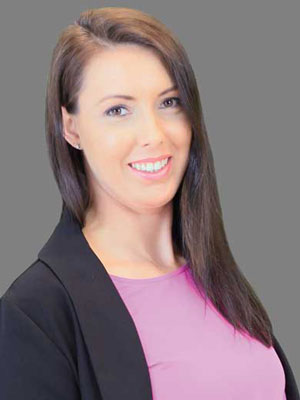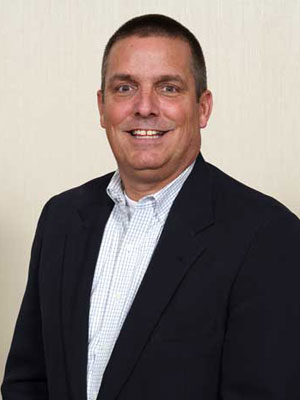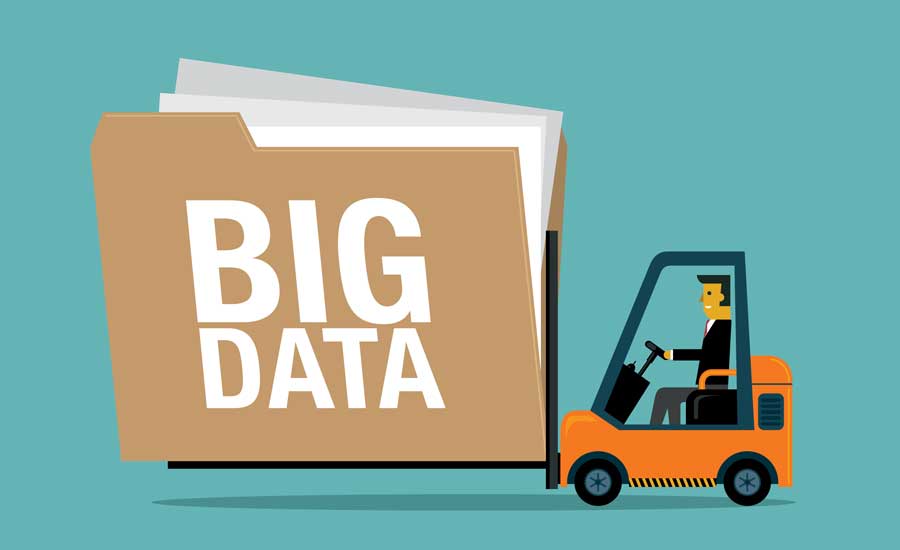2018 was a banner year for HVACR distributors. The 77 respondents to Distribution Trends’ 2019 Top 50 Distributors survey represented $19.1 billion in HVACR sales, which is up 7.9 percent from the $17.7 billion in HVACR sales reported for fiscal year 2017. As such, 95 percent of the respondents reported increased HVACR sales. Every company that ranked in the Top 50 showed higher HVACR sales in fiscal 2018 versus 2017. Thirty-seven of the Top 50 reported double-digit sales increases, and, of those, six saw their HVACR sales jump 20 percent or more from the previous year.
So, how exactly did these top-performing distributors achieve such significant success? What strategies and game plans did they employ to achieve sales growth? What’s next on their agendas when it comes to 2019, 2020, and beyond? Distribution Trends recently connected with leaders representing five of the 20 largest distributors in the nation to discuss these topics and more.





What channel marketing effort has produced the most success for your company? Can you give a specific example/data to backup this claim?
WILLIAM SUMMERS: We have a new director, Brian Fowler, who came to us from an acquisition of Security Plumbing and Heating Supply. He has brought the concept of regional marketing specialists, who are field-based and work with a pre-defined group of our locations. This has helped us develop a social media offering, direct mail flyers, Mail Chimp, and Constant Contact along with brand development.
RENATA MORGAN: We have introduced some new digital programs over the last six months that fall in line with the ‘self-service’ model of enabling customers to find the information they need without having to rely on us, but these efforts are still too new to provide specific data.
The goal is to strengthen customer relationships by making it easier for them to do business with us. Whether it’s calling the local branch; emailing their sales rep; or going online or into our app to find pricing, product information, and stock availability, we’re using technology to strengthen and enhance the relationships we’ve had for decades while adapting to the digital landscape.
Are you using automation or artificial intelligence in your warehouse? Why or why not? If so, can you give an example of how the technology is best utilized?
AJ NAHMAD: Watsco has digitized the vast majority of its warehouse processes, and we’ll soon have 100 percent of our branches on our state-of-the-art order fulfillment platform. While not yet full automation or artificial intelligence, this technology digitizes the entire warehouse management process, which allows for far greater efficiency, deeper warehouse analytics, and a far more seamless and transparent customer experience.
BRIAN NEWPORT: We have begun using a warehouse management system (WMS). The purpose behind the implementation of this technology is multi-faceted. We want to create very consistent stocking/locating/acquiring of equipment, parts, and supplies. This system provides guidance to ensure that we keep the same product in the same place every day.
This provides better inventory management, more order pulling efficiency and accuracy, and allows for new hires to become more productive sooner. It’s no longer necessary for new hires to have be “shown” where we keep everything, which takes time and a lot of repetition. They simply can use the handheld device to guide them to the proper location to access that part/supply/product.
In addition, there is a bar-scanning technology that forces employees to scan the part to ensure that they did indeed pull the right part. This program then automatically updates our inventory management system to ensure we are properly tracking the sale of the products to ensure additional inventory is being ordered as needed. In the locations that we have fully implemented this technology, our order pull accuracy is nearly 100 percent, our time to pull an order is shorter, and our customers get their orders in a more timely fashion.
Big data is serving as a game-changer in HVACR distribution. What analytics do you monitor most frequently? How frequently do you issue reports, and how do you use this information to motivate your team?
DAN BENISCHEK: In our previous system, there wasn’t much ability to mine the accumulated data we had gained through the years. Our new ERP gives us the opportunity to dive deep into our “Big Data,” primarily through the business intelligence tools that were in beta phase at the time of go live. We have designed 11 databases and imported seven years’ worth of information, identifying more than 50 dimensions that we wanted to be able to analyze and report on.
Not only does our BI tool grant us this deep look into our wealth of data, it also allows us to report on key metrics, including our weekly metrics scorecard. It starts with our Leadership Scorecard, which measures 22 of our core metrics, broken into financial, employee, inventory, customer, and productivity categories. Some of these metrics include overall profitability, employee retention, percentage of healthy inventory, parts and accessories inclusion, and open-order closure rate.
These measures are covered in our mandatory weekly meetings. Every department, region, and segment has these same weekly meetings down to the branch manager level, and each has its own scorecard of key performance indicators that support our overall quarterly financial goals. This process has been very successful, and the scorecard is an important tool that supports the “100% Responsibility/No Excuses” ethos our employees live every day.
NAHMAD: We are obsessed with data at Watsco, and our operating units have embraced the data-driven culture we now live in. We believe strongly in self-serve analytics as well as interactive dashboards. Static reports are a thing of the past. In a given month, we will have 2,000-plus employees executing millions of analytical inquiries around a very broad range of challenging business topics. Every business decision made within Watsco by our talented employee base is made with a valuable blend of years of industry intuition augmented by years of rich analytical data insight.
On a 1-10 scale, how do you rate the relationships with your contractors? What could they do better to improve this partnership? What could you do better?
NEWPORT: As an average, I would think we have a 7.5 rating overall. We have those contractors that are a 10, and we have relationships whereas the rating would be below the 7.5 average. For Habegger, our best ratings/relationships come from those contractors that are looking for a complete, all-inclusive relationship. They are very loyal to our HVAC brand and to Habegger. They value the business partnership, education and training, personal engagement, and more that we bring to the table. These dealers tend to look for long-term commitments from their distributor and look for a true partner, someone that has their back and will be there with them and for them during good times and bad.
Regarding contractors looking for purely transactional relationships, they score well with us as well; however, that typically hasn’t been our primary path to success, as those relationships tend to be more tentative and short term in nature.
MORGAN: Relationships have historically been a strong point for us, probably an 8 or 9, but that is shifting as our traditional customers age and younger technicians and owners enter the industry. Some experts will tell you that millennial buyers care less about human interaction than completing a task or finding the information they seek, so we could do more to emulate the buying experiences they expect in a B2C space and translate that into all touchpoints throughout their B2B buying experience.
In contrast to that, offering top-notch, old-fashioned customer service is still very important and can make the difference between a transactional shopper and a loyal customer. That is part of what makes doing business right now both exciting and challenging. To be successful, we have to be digitally savvy and able to stay on top of or ahead of the latest consumer trends while not straying too far from the traditional practices that have allowed our success over the past 45 years.
Given the breadth of that statement, there is a lot we could do better. Our customers could improve the partnership by being open and honest with us about their priorities and informing us of where we fall short. We take feedback to heart and try to use a customer-centric approach to our decisions.
In the next five years, what element of distribution will have the grandest change on the industry? Are you doing anything unique/special to prepare for this issue today?
SUMMERS: The biggest change will revolve around digital commerce and the speed of order, availability, and delivery of product. We all observe and study disruptors like Amazon, and I think expertise is being lost with an increase in information, but information doesn’t have applications like expertise. The human element at the location in the community will have a bigger impact, not a lesser impact. It’s the face behind the screen that will form customer relationships.
BENISCHEK: Not surprisingly, we feel that employee development and recruiting is both the greatest challenge and opportunity for distributors across the country. We have a large footprint, and every market we are in has a shortage of qualified candidates for store positions and drivers. To overcome this, we have expanded our employee training and development programs, changed our recruiting practices to be more proactive in finding the right candidates versus them coming to us, and have created a “Larson Emerging Leaders” program to develop mentor relationships for high-performing/high-potential employees.
This year, we have also joined forces with GPS Education Partners, a nonprofit organization that is working to close the skills gap driven by an aging workforce and youths who are not aware of the possible careers in the trades or distribution. Selected students work rotations between our facilities and as service technician apprentices with key contractor customers, all while earning high school degrees. Distributors need to take an active role in developing talent pipelines in our markets, and this type of collaboration is needed to show the next generation of workers the great opportunities that are available to them after school.
Publication date: 6/3/2019
Want more HVAC industry news and information? Join The NEWS on Facebook, Twitter, and LinkedIn today!



Report Abusive Comment